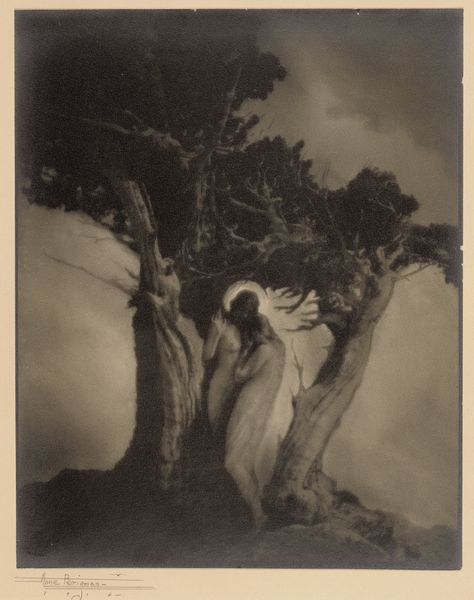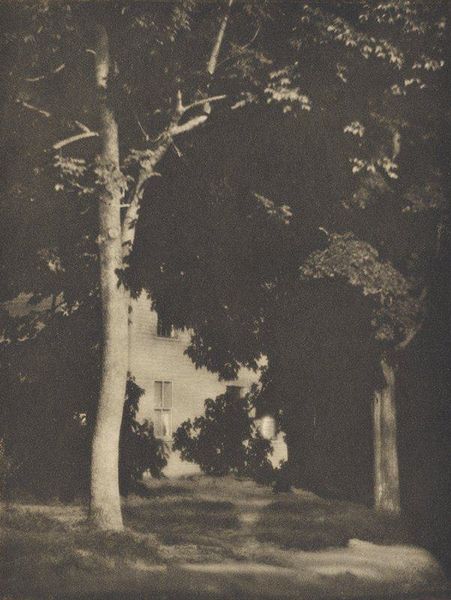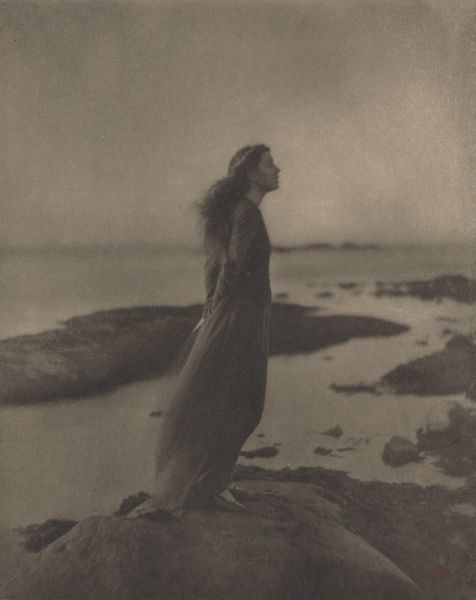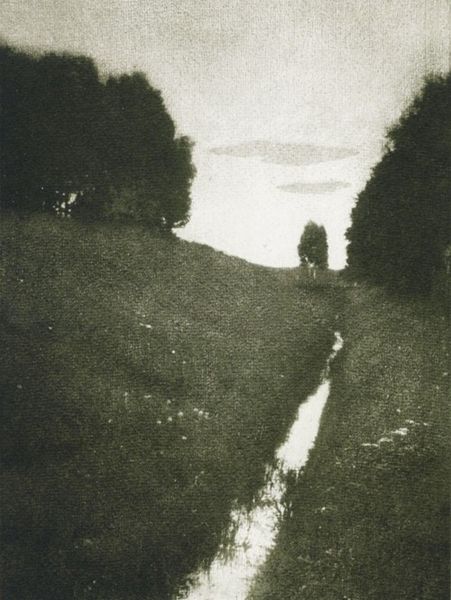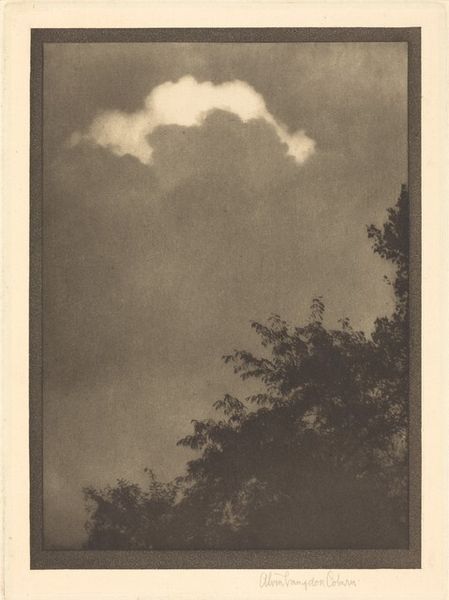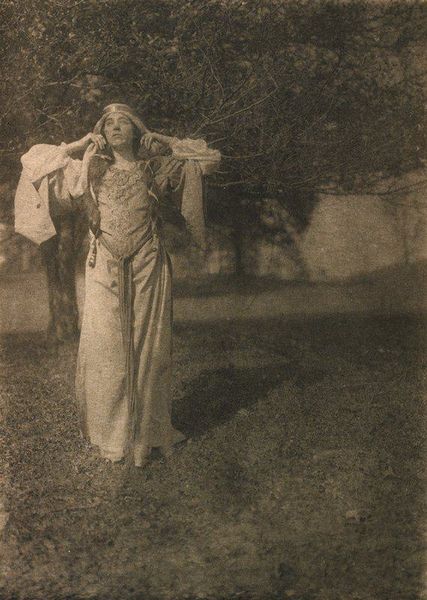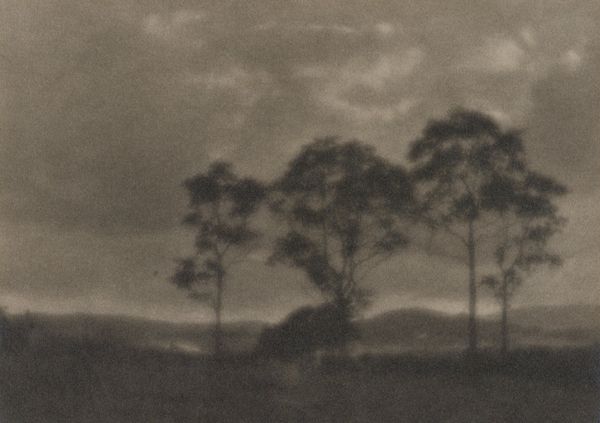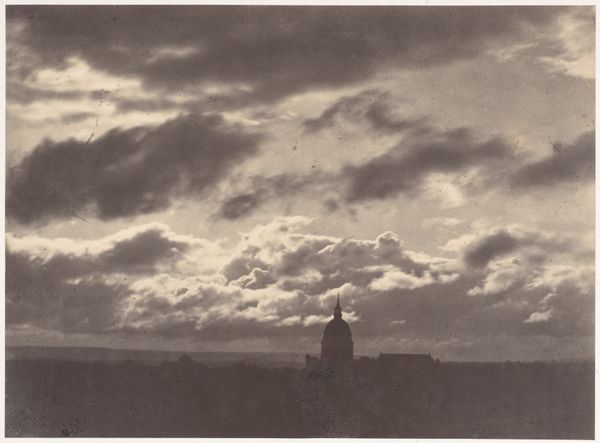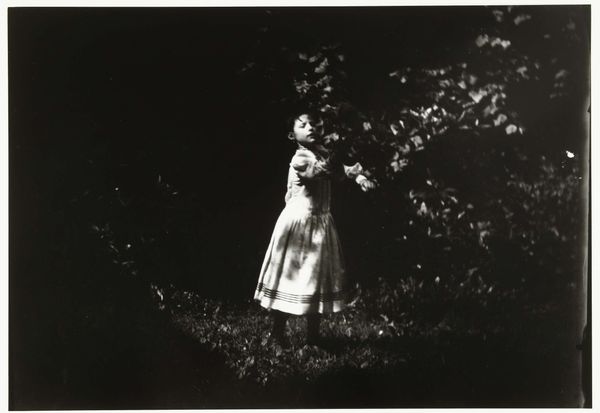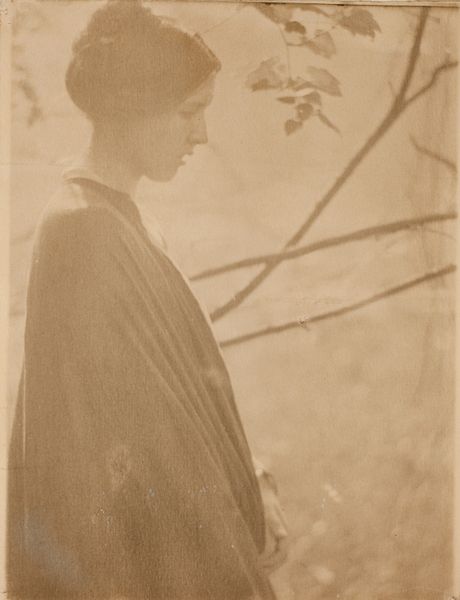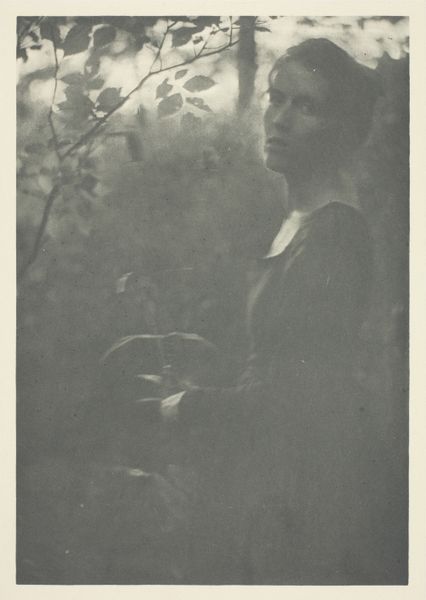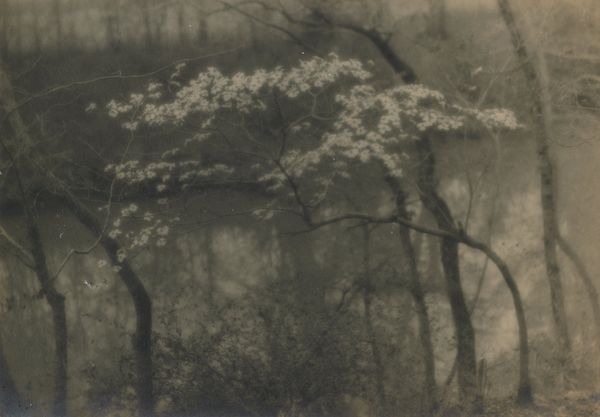
#
black and white photography
#
photo restoration
# print
#
charcoal drawing
#
charcoal art
#
old-timey
#
monochrome photography
#
19th century
#
charcoal
#
graphite
#
shadow overcast
Dimensions: image: 20.2 x 15.5 cm (7 15/16 x 6 1/8 in.) mount: 20.7 x 16.2 cm (8 1/8 x 6 3/8 in.)
Copyright: National Gallery of Art: CC0 1.0
Curator: Here we have Clarence H. White's photograph "Morning," created around 1905. The platinum print captures a hazy, tranquil scene. Editor: It feels like a memory, doesn't it? The muted tones and soft focus give it an ethereal, almost dreamlike quality. There's a stark contrast between the blurred background and the darker tree trunk. Curator: Absolutely. It is representative of the Pictorialist movement, where photographers aimed for painterly effects, blurring the lines between photography and fine art. I think White's "Morning" captures a nuanced tension between societal expectations of women's roles and individual autonomy during the late 19th, early 20th century. Editor: Interesting. Looking purely at its formal aspects, the composition seems carefully constructed. The verticality of the tree bisects the image, leading the eye to the figure standing off to the right, and then looping back around. What's the effect of the figure in the image, to your eye? Curator: The lone woman in a flowing white dress near the foreground embodies the dawn of new possibilities for women at the time—or the potential constraints of emerging modern expectations. She stands between the tree representing her, perhaps the familiar societal expectations and then is juxtaposed to the open background. Editor: Yes, the woman almost dissolves into the soft-focus background. It makes her seem less present, more like a phantom. Is this ghosting intentional? I find this so thought provoking. Curator: Very possibly. And given White's later focus on teaching and mentorship within the Photo-Secession group, which advocated for photography as a legitimate art form, one could even interpret "Morning" as a quiet call to agency. Perhaps in part his agency with his position as an influential artist. Editor: This deepens my understanding. The tree, figure, water all contribute. The textures alone invite introspection. There are layers here. Curator: Exactly. It encourages us to consider not just what we see, but also the broader historical narrative within which the artwork—and the woman in it—exists. Editor: I hadn’t considered how it asks one to look closely. Thank you. Curator: You're welcome. It has been a pleasure seeing "Morning" in a new light alongside you.
Comments
No comments
Be the first to comment and join the conversation on the ultimate creative platform.
